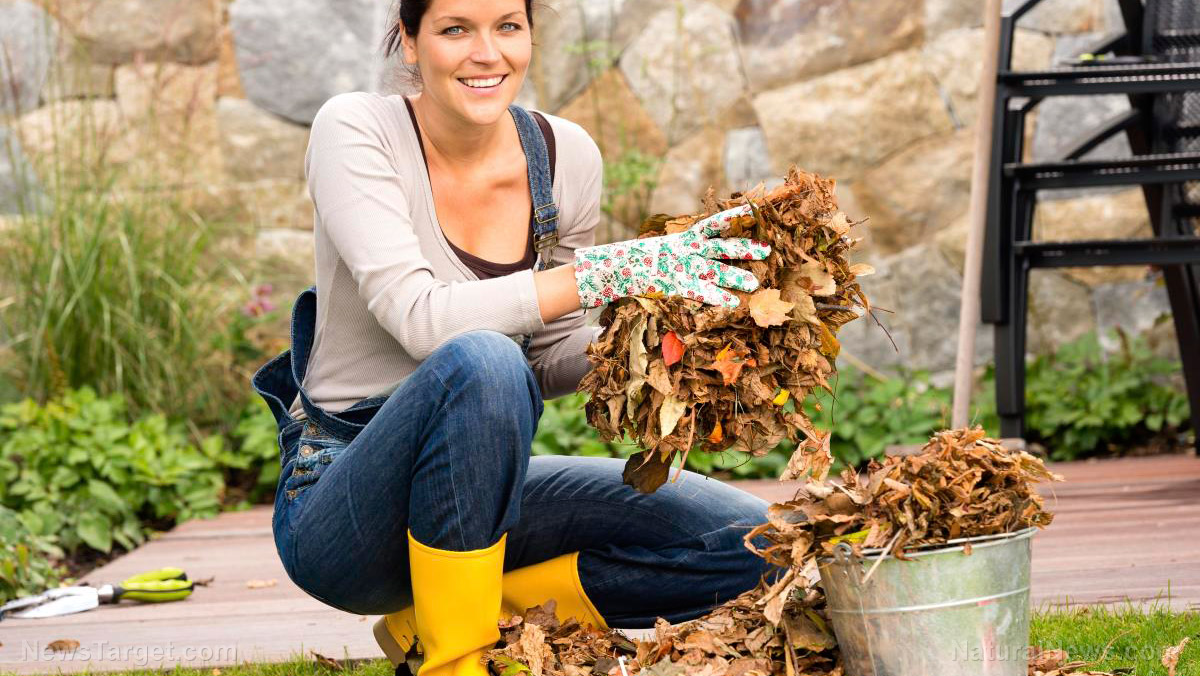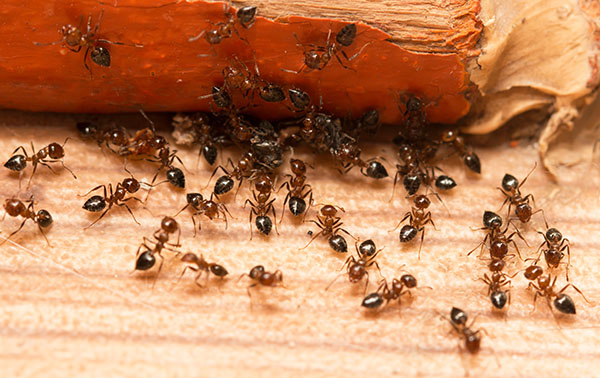 Parler
Parler Gab
Gab
Organize, sharpen, sanitize and restore your gardening tools
Sharp-rust-free tools will make your gardening tasks much easier – whether it means digging into the soil or cutting through weeds. If you keep your tools in good shape, you won't need to replace them as often. Remove any rust or build-up that might be corroding them. Once the tarnish is removed, add a coat of boiled linseed oil to help stop the oxidation process. For shovels and trowels, you can use a handheld mill file or rasp from your local hardware store. For pruning shears and knives, you will need a honing stone with a pointed edge, such as a diamond honing stone or a whetstone. Sanitizing your tools with a mild bleach solution sets your plants for a healthy season ahead.Apply compost or spread mulch
Spreading a two-inch thick layer of mulch over the ground shields your soil from the sun, putting less stress on plant roots and also slowing moisture loss due to evaporation. (Related: Benefits to composting for organic sustainability in natural vegetable gardens.) Anything made from organic matter – a mix of grass clippings and shredded leaves, pine straw and shredded wood – will work. As it decomposes, the mulch will help improve soil structure and add nutrients.Pull up weeds
Many types of weeds thrive in the summer heat and can quickly go from tiny to gigantic. It's important to remove them from your garden as soon as possible because weeds steal moisture and nutrients from your plants. Many weeds also encourage insect pests and diseases to move in. Weeds are easy to pull when they're young and small; moist soil makes this task even easier. Another reason to tackle them while they're young – you want to stop weeds from producing seeds. A single dandelion plant can yield 2,000 seeds in a year, while lamb's quarters can produce 150,000 seeds in a year. That's a lot of future weeding you can avoid.Clean up your garden beds
Once temperatures are consistently above 50 degrees – which, depending on your climate, might fall during the spring or summer seasons – rake leaves and debris from garden beds and add them to your compost pile. This allows you to have compost ready early, so you can apply it to the base of your plants as they grow.Add color with summer annuals
Once summer arrives, many spring-blooming annuals will fade. Keep your yard looking tidy by removing the spent plants and replacing them with heat-loving varieties, such as ageratum, angelonia, coleus, lantana, pentas, salvia, sweet potato vine and zinnia. These summer-friendly annuals grow quickly in warm temperatures and provide a beautiful burst of color.Plant summer-blooming bulbs
Summer bulbs, like calla, canna and dahlia are an easy way to add color to your landscape all summer long. These varieties are tender, so if you live in a zone where they're not hardy, plant them after all danger of frost has passed. Once temperatures rise, they grow quickly.Pinch back mums and other late perennials
Keep asters, mums, sedums and other fall-blooming perennials standing tall by pinching the top inch or two of new growth. You can do so up to the Fourth of July. Pinching the tops of the plant typically results in more compact, sturdy growth. It may also encourage the growth of more blossoms from the side shoots, though the flowers typically end up a little smaller and appear a couple of weeks later than normal.Remove faded flowers
If you remove spent blooms from many of your annuals and perennials, you might see more flowers. Called deadheading, this process prevents plants from producing seeds, so they put more energy into making beautiful blossoms.Watch for pests and diseases
As with weeding, keeping tabs on pests and diseases should be done throughout the growing season. But midsummer is a particularly important time to fight plant-destroying bugs and diseases because that's around when their populations are really taking off. Here are some of the most common summer problems to watch for in your garden:- Black spot
- Cucumber beetles
- Grasshoppers
- Japanese beetles
- Powdery mildew
- Rust
- Tomato hornworms
Water your garden
If your region experience dry summers or a dry weather pattern, you may need to water your garden through the warmest months to keep it looking its best. Most common garden plants prefer an average of one inch of water a week. It's best to apply that water all at once to encourage plant roots to sink more deeply in the soil. When watering, apply water directly to the ground rather than wetting a plant's foliage; water sitting on the leaves can lead to disease. Drip irrigation systems and soaker hoses are great for this job.Prune trees and shrubs
Prune trees and shrubs before they have new growth or when buds begin to break for blooming. If you wait too long, you could prevent your fruit trees from producing.Make sure you’re ready for harvest
If you're an edible gardener, now is the time to ensure you have everything you need once your fruit and vegetable crops begin producing. Stock up on canning supplies and consider using up last year's preserves in the freezer to make room for this year's bounty.Replace your hose
If your hose didn't survive winter or spring, it's definitely time to hook up a new one. Be sure your hose extends to the majority of your property, or check on any in-the-ground irrigation nozzles or sprinkler systems to make sure they are functioning properly before temperatures climb too high. Visit HomeGardeningNews.com for more gardening tips. Watch this short video about summer garden. This video is from the Pop Up Homestead channel on Brighteon.com.More related stories:
Gardening and volunteering boosts mental health, relieving stress, anxiety and depression. How gardening can help your immune system. Gardening is more effective exercise than going to the gym: burns more calories… more rewarding and enjoyable. Sources include: TheEpochTimes.com BHG.com 1 BHG.com 2 BHG.com 3 BHG.com 4 BHG.com 5 BHG.com 6 FarmScapeGardens.com Brighteon.comSurvival tips: Alternate power sources for your homestead
By Zoey Sky // Share
Health tips: 7 Ways to control your blood pressure
By Olivia Cook // Share
Digital prepping: How to survive in a world dominated by AI
By Zoey Sky // Share
Watch your step: How to relieve painful toe cramps
By Zoey Sky // Share
Keep destructive ANTS away from your home with these steps
By Olivia Cook // Share
Governments continue to obscure COVID-19 vaccine data amid rising concerns over excess deaths
By patricklewis // Share
Tech giant Microsoft backs EXTINCTION with its support of carbon capture programs
By ramontomeydw // Share
Germany to resume arms exports to Israel despite repeated ceasefire violations
By isabelle // Share










